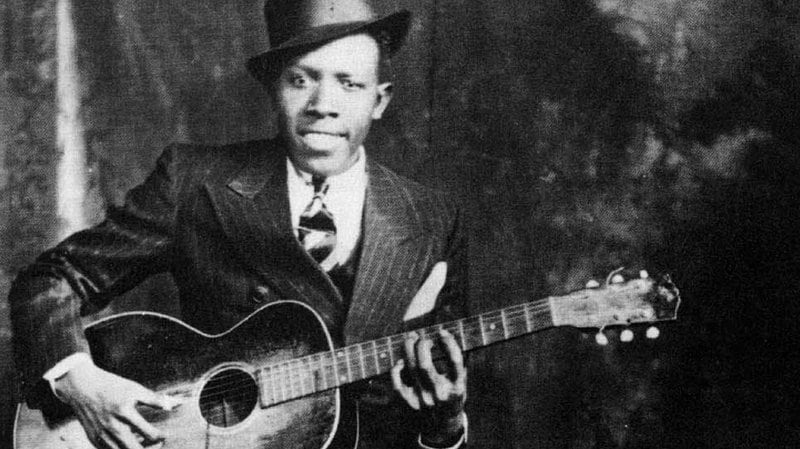The name of the band is Talking Heads, the NYC outfit inspired from the mid-1970s onwards by punk and funk, yet which embraced such individuality they didn't sound like anyone else. Remain in Love: Talking Heads, Tom Tom Club, Tina by Chris Frantz (White Rabbit, £20), is an insider's account of the band's formation and music, the author's long-standing relationship with the group's former bassist, Tina Weymouth, their dual position in another successful group, Tom Tom Club, and, hilariously, co-producing a Happy Mondays album (Yes Please!) in Barbados.
It’s more than just about these, however, but also Frantz’s opportunity to calmly comment on the nature of David Byrne’s perceived leadership of the band. One of the best asides is when he notes Byrne’s “seemingly continual need to aggrandise himself at the expense of his collaborators, as if their contributions were not as important as his”. With these observations (they veer between straightforward, sardonic and bemusing) it’s clear that Frantz is less interested in settling scores than setting the record straight, and because of this Remain in Love comes across as perceptive and not precious or pernickety.
There’s a good backstory, too: Frantz details his childhood in Charlottesville, Virginia, to Pittsburgh, Pennsylvania (where, in 1964, he watched The Beatles on The Ed Sullivan Show – “one of the most culturally important events of my lifetime”) and on to boarding school, where he was introduced to the music of James Brown and Bob Dylan.
It was when Frantz arrived at the Rhode Island School of Design in the early 1970s that his life in music began to fully unfurl. Between meeting Weymouth (“I had a bounce in my stride and Tina had a twinkle in her eye”) and Byrne (“his hair was bleached blonde, almost white . . . It was a wild look, very proto-punk”), the future Talking Heads were on the way. Before the band even formed, the song Psycho Killer was written by all three – proof enough, he writes, “that we should do more of this in the future”.
We know what happened next, but it’s Frantz’s thoughtful yet easy-going writing (which includes perhaps more effusive declarations of love for his wife than even the most romantic idealist would want) that makes the familiar all the more welcome.
Jude Warne
Riddle me this: the band America was formed in London in 1970 by the sons of US air force personnel and was so named because they didn't want people to think their Crosby, Stills, Nash & Young harmony-led songs were created by British musicians. The trio would eventually relocate to California, high on the hog following the 1972 rerelease of their self-titled debut album (the reissue of which included their best-known song, Horse With No Name). That the group still exist (original member Dan Peek died in 2011) might be a surprise to many outside their fanbase, but you'll learn this and much more in America, the Band: an Authorised Biography by Jude Warne (Rowman & Littlefield, €22).
Segmented into three portions (the first of which is drolly titled “the first part of the journey”), what is effectively a 50th-anniversary present outlines how the trio eventually overcame resistance to their familiar, amiable and mellow soft rock to become as close to a music institution (in their homeland, mostly) as it’s possible to get. As diligently unveiled by experienced US music writer Warne, the story may not have the usual shock highs and lows of even an average rock act. But for an awareness of how a heritage band can continue testing themselves creatively as well as focusing on the commercial benefits of their maturing demographic, it’s an educational read.
Janet Devlin
Insight also seeps from My Confessional by Janet Devlin (Omnibus Press, €20). Some readers might recall Co Tyrone's Devlin from the 2011 season of X Factor, and how, at the age of 16, her natural talent seemed out of place amid the manufactured fluff. Following the title of the book to the letter, Devlin doesn't hold back, yet from the outset she makes it clear that the negative aspects of her life which lead to self-harming, anorexia, alcohol addiction and mental health issues didn't happen because of the show – "My mental constitution was on a downhill trajectory long before", she advises.
From being voted off X Factor in week eight and accepting a place on the subsequent tour (“I’d hoped that this would be the end of the sadness. That is not the way the world works.”) to working with a fraudulent industry figure she calls “Voldemort” (she is unable to name names “due to legal reasons”), Devlin’s courageous, telling-it-like-it-is book concludes with an acceptance of hard-won inner peace.
Andrew Krivine
There is conflict, too, in Too Fast to Live Too Young to Die: Punk and Post Punk Graphics 1976-1986, by Andrew Krivine (Pavilion/Rocket 88 Books, £275) but it's more aesthetic than actual. This is truly a sight for the eyes, a brilliant if costly cornucopia of punk-related art and memorabilia collated by New York author Krivine, who in 1977 first experienced punk rock as a 16 year old while visiting his cousins in London.
With his junior year spent at the University of East Anglia, Krivine’s compulsion to see post-punk bands ran in parallel with an appreciation of design principles influenced, sometimes blatantly, by various 20th-century art movements and artists (including Dadaism, Bauhaus, Futurism, Piet Mondrian, Ray Lichtenstein). Krivine also highlights how the punk and post-punk years sanctioned the rise of independent, reactionary designers and photographers, much of whose excellent work is included here. (The list includes Malcolm Garrett, Roberta Bayley, Jamie Reid, Peter Saville, Jo Slee, Gee Vaucher, Anton Corbijn, Jill Furmanovsky, Pennie Smith, Robert Mapplethorpe and Mick Rock.)
Because of Krivine’s NYC connection, there is a wealth of US-designed artefacts, making it an inordinately sumptuous coffee table book for the punk/post-punk music lover in your life. Curiously, the only non-UK/US music act to feature are Ireland’s Virgin Prunes, whose featured artwork (for an EP, Twenty Tens, and their album …If I Die, I Die) is not credited, despite the best intentions of the publishers to source details.

Annye C Anderson
Delta blues legend Robert Johnson died in 1938, aged 27. Any fan of the blues will hold Johnson's brief output (less than 30 songs, recorded in two sessions between 1936 and 1937) in high regard and know them inside out – unlike Johnson's personal life, of which there is sparse and inconsistent detail.
For diehard fans and blues historians, some notable gaps will be filled with Brother Robert: Growing Up with Robert Johnson by Annye C Anderson, with Preston Lauterbach (Hachette Books, £20). The recollections of nonagenarian Anderson (Johnson's stepsister) are of when she was a young girl and so, notes Elijah Ward in the foreword, "memories of him are a little girl's memories".
Still, it is an authentic family voice, and so we read of the bluesman in a new light, at home in a domestic setting and not as one might usually picture him: a roving performer who plied his trade on street corners, weekend parties and any juke joint that would pay him either money or in kind. As in-depth insight, the book is slight, but as a tangential biography it joins dots in fascinating ways.












